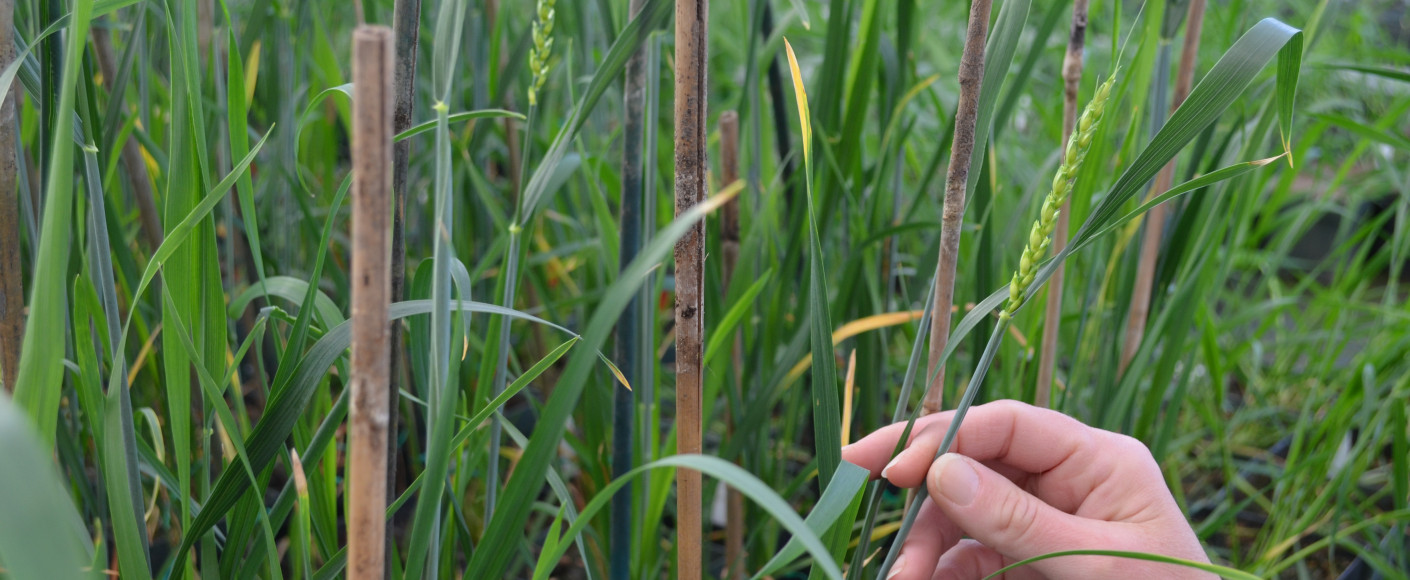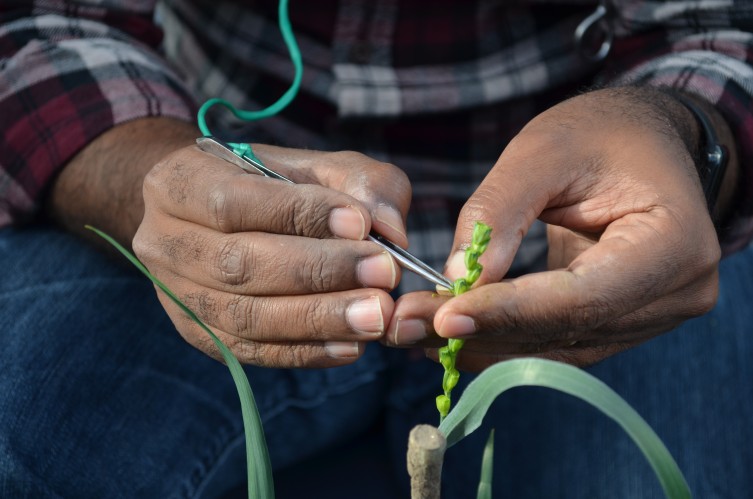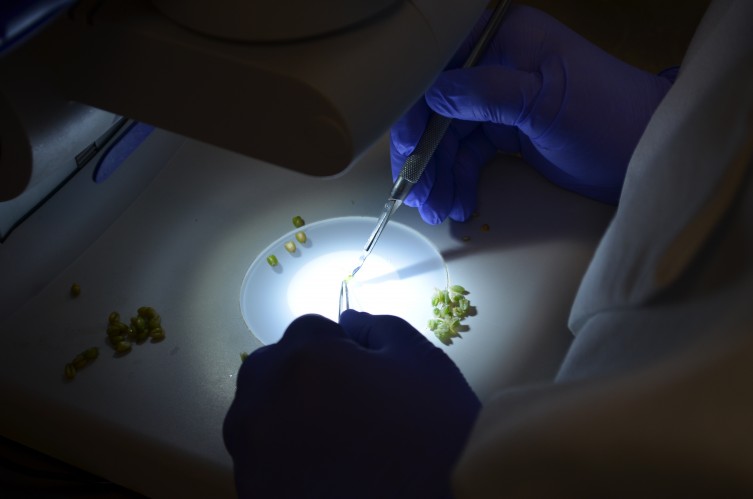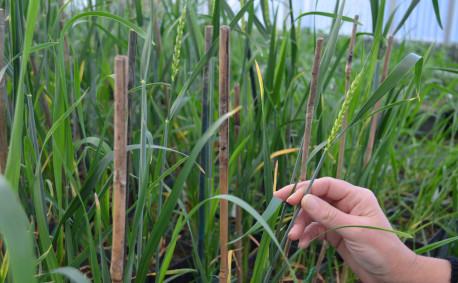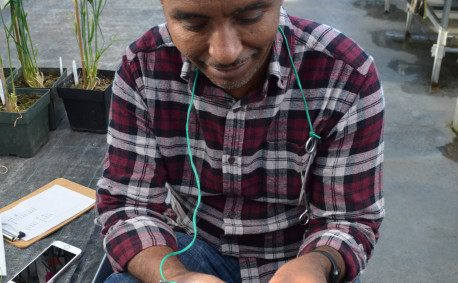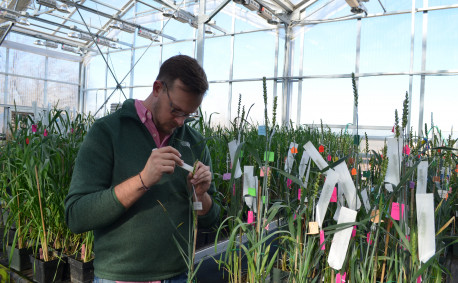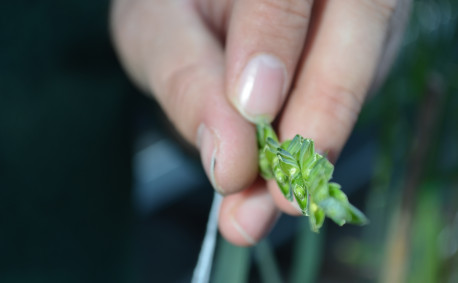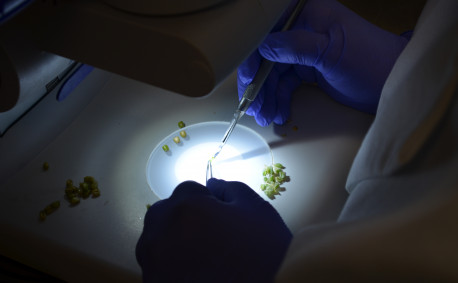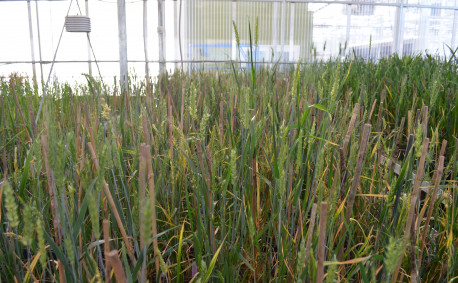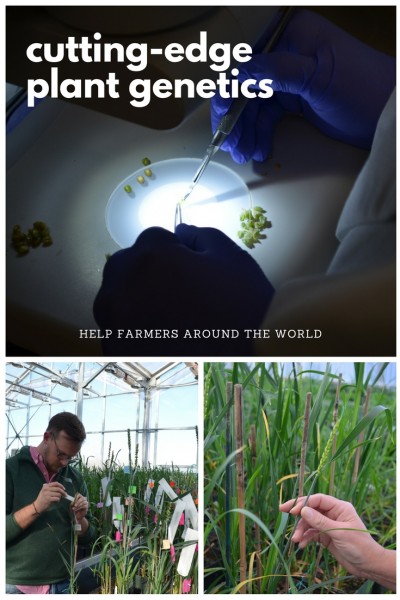Cutting Edge Genetics Help Kansas Farmers
I love shopping for big-ticket items like fancy dresses and new cars. (It rarely happens, but I love it when it does.) I enjoy daydreaming, then shifting into practical mode as I draft up my list of must-haves and nice-to-haves. List in hand, I sift through my options until I find the perfect thing.
Wheat farmers do the same thing with their seeds. Each year, they turn to a special seed catalog that showcases different varieties of wheat. Each variety gets rated on about a dozen factors including ideal soil type, drought resistance and protein level. This information lets them pick out the perfect seed for their location, weather conditions and more.
There’s a whole industry behind finding the perfect seed.
I got a peek inside some fascinating science behind how new varieties get to market at the Kansas Wheat Innovation Center, a state-of-the-art facility in Manhattan devoted to all things wheat.
There, I learned about an advanced technology called doubled haploid production. (Don’t worry. It made my brain swim, too. But stick with me — it’s really interesting!) This highly specialized process is performed by Heartland Plant Innovations. They get wheat seeds from seed breeders both in Kansas and across the globe and then work their magic (er, science) right here in Kansas!
But, before we go into what the process does and how it works, let’s look at why it matters.
Why Is Wheat Breeding Important?
Back in the early 1900s, wheat farmers were lucky to get 14 bushels of wheat per acre. Today, those yields are closer to 40 bushels. That’s great news because it means we’re able to feed more people with less farmland. But we couldn’t do it if it weren’t for selective breeding and cross breeding. And that can take a long time.
Enter advanced breeding and genetics. Some plants are naturally more drought tolerant. Some are resistant to certain types of viruses and pests. Consider a year with a really bad insect infestation that could kill off entire crops in a region. You’d want a plant that could stand up to that as quickly as possible, right? Wheat breeders take traits from these different plants and cross them so that their offspring can have the best of both parents!
In a nutshell, breeding:
- Protects plants from disease
- Helps farmers improve yields
- Provides more food for a growing population
The doubled haploid process not only lets scientists produce seeds with desired traits, but it takes a fraction of the time. (You can see why this is so important to farmers, who are tasked with feeding us!)
A normal breeding process takes ten to 12 years, but the doubled haploid process cuts that down to six to seven years. Sure, that might still seem like a long time, but every second counts to protect the food supply. When you consider that to get enough seeds to reproduce the desired traits naturally could take generations of plants, you can see how speeding up this process can make a huge difference in the agricultural and food community.
About Doubled Haploid Production
Essentially, doubled haploid production creates “pure bred” wheat seeds after the breeders make the cross they want. But the science, and precision work required, is fascinating.
Here’s how it works:
- Starter seed: Seed breeders around the world look for different characteristics in their plants. (For example, disease resistance and high protein levels would help plants thrive in various regions and produce grains that would be better for baking.) When breeders grow a plant with their ideal mix of traits, they send the seeds from that plant to Heartland Plant Innovations.
- Plant growth: Heartland Plant Innovations plants the seeds in greenhouses, where they grow into full plants, called the mothers.
- Emasculation: (Sorry, guys, but this one is just like it sounds.) Before the mother plant can self-fertilize, the male parts are removed.
- Trickery: (Note: That is NOT the technical term!) Within 48 hours of emasculation, there is a brief window of time that the plant can be tricked into thinking it’s been fertilized. Scientists take pollen from a sweet corn plant and apply it to the wheat plant.
- Embryo Rescue: Thinking she’s been fertilized, the mother plant grows an embryo with only one set of DNA—but only half of hers. But, since that plant can’t reproduce, the embryo must be transplanted to a surrogate medium in a test tube. (To protect the embryo, it’s treated like royalty in a special light chamber during this phase.)
- DNA doubling: Since there is only one set of chromosomes in the embryo, a chemical called colchicine is applied, which doubles the existing DNA. Now both sets of chromosomes are identical. The plants all grow at the same time, flower at the same time and ripen at the same time.
- Winterizing: Next, tough love! No more light chamber. It’s time for harsh winter weather. The baby plants are moved to a cold area to simulate winter for six to eight weeks. (The fancy word for this phase is vernalization.)
- Full growth: After vernalization, the baby plants go back to the greenhouses until they grow to full size. Heartland Plant Innovations collects the seeds (that have the identical, doubled DNA of the mother plant) and sends them back to the breeders.
From there, breeders can study the seeds, rate them according to various traits (like disease resistance and protein content) before making them available to growers.
Fun Fact: Scientists are working on a double haploid process for sorghum too. The technology already exists for corn! Pretty cool!
More About
Doubled Haploid Process in Wheat
Take a look at the process step by step!

